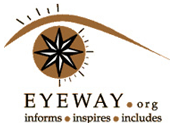For years, that was essentially my experience on Facebook, and it
remains that way for me on other social media platforms and the
internet at large. You see, I am blind. I rely on a screen reader to
use my computer — it reads the words in text out loud. Since a screen
reader recognizes only words and numbers, photographs, diagrams and
other images are often inaccessible.
Three years ago, my life on Facebook transformed. Now my screen reader
tells me that I am “looking” at a photograph of my sister, standing on
a beach in Hawaii, enjoying a colorful sunset, or that my children are
together at their favorite cafe, sharing brunch and smiling at each
other.
This change occurred thanks to a technology that usually gets negative
attention in the press: facial recognition.
I wanted to explore Facebook from its earliest days, just like
everyone else. But without accessibility tools, I could understand
very little of the content posted by other users. I was frustrated.
Fortunately, I knew Elliot Schrage, then Facebook’s vice president of
communications and public policy, because our sons attended the same
school. Elliot agreed to meet with me and I told him all about what
it’s like to be a blind Facebook user and how the platform could do a
better job of including people with disabilities. He assured me that
Facebook was on it.
And it was. In July of 2011, Facebook established an accessibility
team. Nonetheless, access during those first years remained very
limited. I could hear only that my newsfeed contained “photos.” There
was no way for me to understand what the pictures were about. My time
on Facebook was both enticing and frustrating. I wanted to understand
and appreciate everything that my Facebook friends shared, but I
couldn’t.
In 2016 Facebook introduced “automatic alt text” technology to help
identify objects. This feature uses artificial intelligence to sense
standard outlines of common objects, like people, dogs and trees, and
then speaks their generic label. Instead of hearing only “photo” when
my cursor scrolled down my newsfeed, I could then understand that the
photo contained a picture of something like “two people, indoors” or
“trees and flowers with blue sky.” This kind of description allowed me
to guess what the picture might be about, but still largely excluded
me from understanding its content and context.
Alt text created even more questions for me. Who were those people in
the picture? What kind of trees, what color flowers? While it was a
step in the right direction, alt text would never describe the images
flooding my newsfeed every day sufficiently to let me participate
fully in Facebook.
Then, a breakthrough: Facebook introduced facial recognition for
photos in January 2017. This feature identifies many of the subjects
in photographs while allowing users to opt in or out for privacy
reasons. A scroll through my Facebook newsfeed today identifies by
name most of the people contained in the photographs. Rather than
guessing who the subject of a picture is, I hear the names of my loved
ones.
While sighted users may take these details for granted, this
technology allows me to understand both context and content, the
nuances of smiling faces and the brilliance of colorful sunsets, even
though I cannot actually view them. Without facial recognition
technology, I would never know that my daughter posted candid pictures
from her wedding, or that my niece proudly displayed photos of her
son’s first steps. I can now enjoy these details that make up the
fabric of our lives and participate in a meaningful way.
Unfortunately, Facebook is the only major social media platform to
embrace facial recognition for accessibility purposes. Other social
media sites use automatic alt text technology. Instagram is one of
many sites that even let users write and post their own “alt text”
descriptions. But it’s not enough: Every site on the internet should
use facial recognition. This would allow blind and low-vision users
full entry to everything that the web has to offer.
If Facebook can do it, so can other sites — especially Instagram,
which is owned by Facebook. The internet relies on photographs and
images for everything from social interaction to commerce. The
internet must be fully accessible to everyone.
That said, I do not approve of uncontrolled deployment of facial
recognition technology. I understand and support communities pushing
to limit the use of facial recognition by government, including
immigration and law enforcement agencies.
Companies should be required to allow people to opt out of having
their face used in facial recognition. There should be strict
protocols for building facial recognition databanks that prevent
companies from inappropriate, unlawful or intrusive purposes. A
network of international laws should ensure that the data is not being
sold or used improperly.
This kind of regulation protects our privacy and safety in other
industries, like automobiles, airplane travel, food and medicine.
Expanding the use of facial recognition online while also developing
sensible rules will take effort, but it will be worth it. I want to
experience the internet just like everyone else — and so do millions
of other people with blindness and low vision. Working within a
framework that respects both the promise of this technology and the
importance of privacy rights will create an internet that is
inclusive, productive and good for us all.
Janni Lehrer-Stein is a disability rights advocate and retired
attorney. She served on the National Council on Disability under
President Barack Obama and is currently a vice chair of the Democratic
National Committee’s disability council.
https://www.nytimes.com/2020/01/17/opinion/sunday/facebook-facial-recognition-accessibility.html

Facebook comments